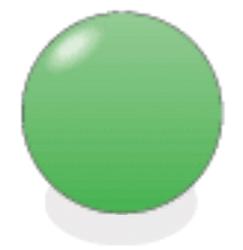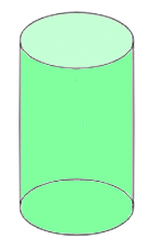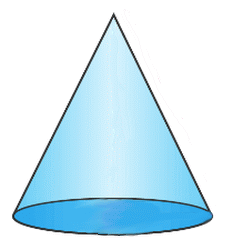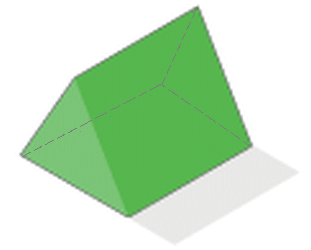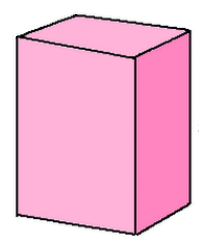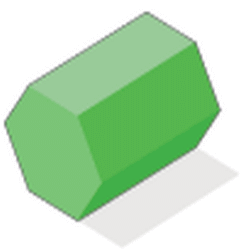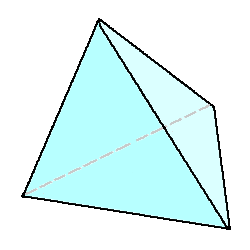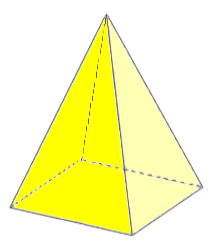 Here are pictures of some common 3D shapes you will encounter in high school mathematics. Click on the link contained in each description to find out more about each figure, including how to find its volume and surface area.
A 3D shape which is made from straight-sided polygons is called a polyhedron; prisms and pyramids (below) are polyhedra. Prisms have flat sides and parallel ends. The name for each prism is based on how many sides there are. Below are three examples.
Pyramids such as the triangular and rectangular pyramids above are named based on how many sides there are, here three and four. 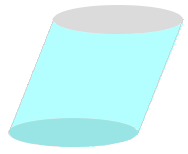
In high school mathematics, all of the shapes examined are 'right angled'. In other words, we only look at 'right cylinders', 'right prisms', and 'right pyramids', where the sides meet the base at a 90° angle. Because we never talk about shapes that aren't right angled, such as the tilted cylinder at the right, we often drop the word 'right', as we did on this page.  The five regular polyhedra shown above are mentioned here and there in high school math. There are only five 3D shapes, or polyhedra, made from identical regular faces. The tetrahedron, as well as the hexahedron (also called a cube), are studied when we look at pyramids and rectangular prisms. The icosahedron, a little less common, is made from equilateral triangles. |
